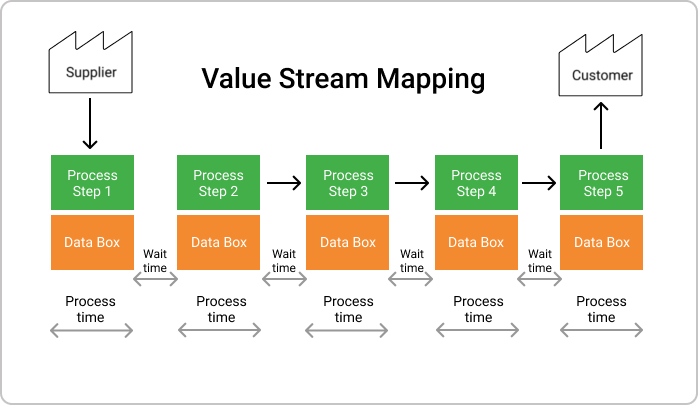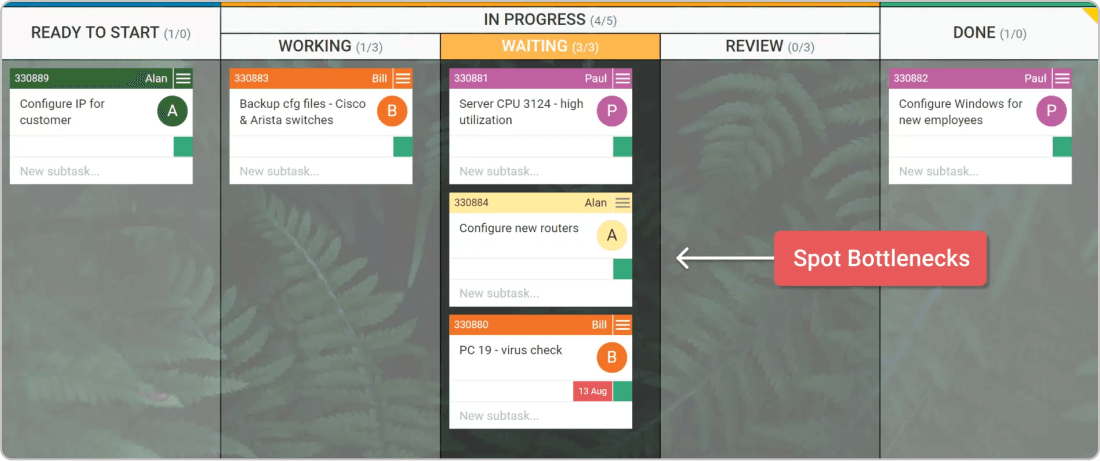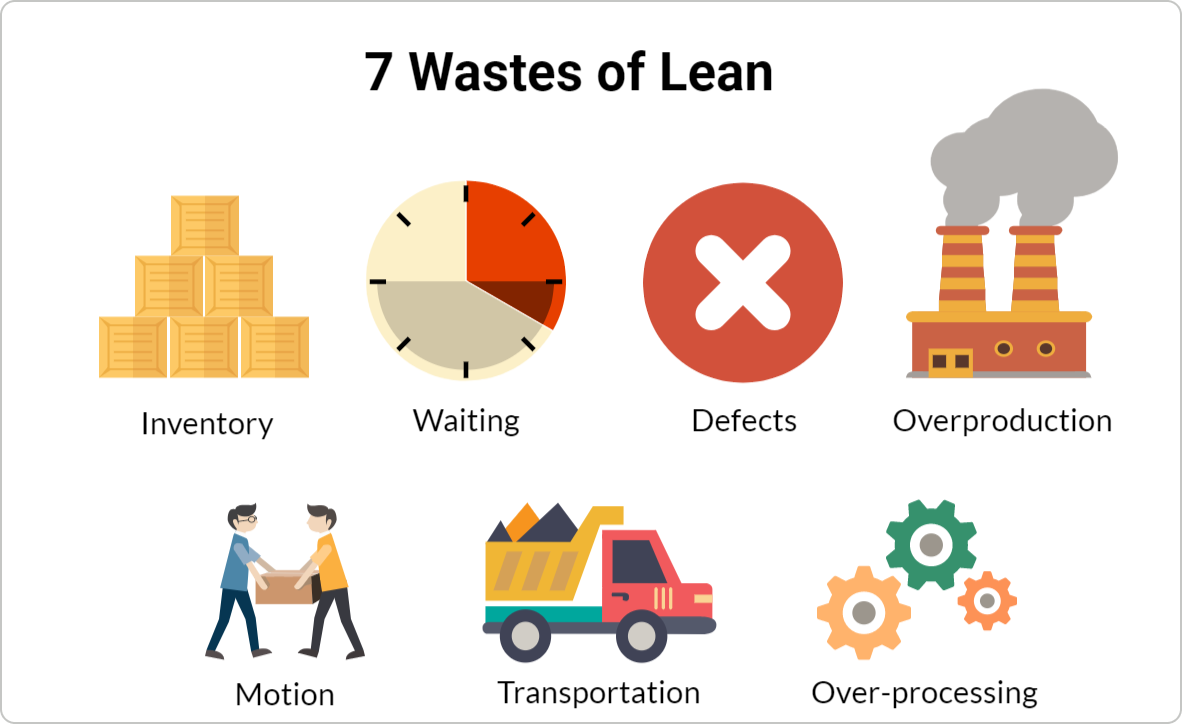Lean Six Sigma is based on a set of principles that are a combination of Lean methodology and the Six Sigma approach. While Lean focuses mainly on eliminating wasteful activities, Six Sigma aims to improve quality by removing causes of defects.
Indeed, both approaches share similar methodologies, values, and tools, which is one of the main reasons why Lean Six Sigma was born.
Lean Six Sigma gets the best of the two worlds and provides a new way for organizational culture changes.
Let’s explore the ground principles of Lean Six Sigma.
1. Focus on the Customer.
The main purpose of every company is to offer a product or service that customers are willing to pay for. Here is why Lean Six Sigma advises that you put customers and their needs first. Before you do anything else, try to jump into your customer’s shoes and realize whether your product would match their expectations. Remember, successful companies deliver added value defined by their customers’ needs.
At the end of the day, it doesn’t matter whether you came up with a great idea if the customer doesn’t get any value from it.
2. Map the Value Streams to Understand the Work Process.
A value stream map displays all the steps in your work process necessary to deliver value to the customer. It represents the flow of work and resources from your organization to the end customer.
 Identifying, mapping, and optimizing your value streams is crucial for creating a successful company for the following reasons: it helps you improve your work processes and become more effective.
Identifying, mapping, and optimizing your value streams is crucial for creating a successful company for the following reasons: it helps you improve your work processes and become more effective.
Let’s see how value stream mapping supports continuous process improvement.
3. Manage and Improve the Process Flow.
Having your value streams mapped is not enough. It is just the beginning. From here, you can identify the problems in your workflow, discover process bottlenecks and investigate the root cause of all process issues.

To uncover bottlenecks and resolve flow impediments, you can use different tools and techniques. For example, with a Kanban board at Businessmap (formerly Kanbanize), you can visualize your workflow, spot bottlenecks, and analyze where work gets stuck. Once you know where the issues are, you can use different techniques such as 5 Whys analysis to find potential causes and resolve them.
4. Remove Non-value-added Steps and Waste.
The idea of eliminating waste originates from the Toyota Production System. Taiichi Ohno, who is considered one of the fathers of TPS, dedicated his career to building a solid and efficient work process.
In the world of Lean, waste means “non-value-added activity”. Mr. Ohno himself describes what Toyota does with the following sentence: "All we are doing is looking at the timeline, from the moment the customer gives us an order to the point when we collect the cash. And we are reducing that timeline by removing the non-value-added wastes."

Eliminating wasteful activities can help companies dramatically improve their operational efficiency, optimize resources and increase profitability.
There are 7 types of waste:
- Waste of Transportation
- Waste of Inventory
- Waste of Motion
- Waste of Waiting
- Waste of Overproduction
- Waste of Over-processing
- Waste of Defects
Before we move on, you have to remember to differentiate Necessary waste from Pure waste.
Necessary waste – This is a non-value-adding activity, which, however, is essential to get things done in a quality manner—for example, testing, planning, etc.
Pure waste – This is non-value-adding and unnecessary activity. It represents anything that doesn’t produce customer value and can be removed from the process immediately.
5. Manage by Fact and Reduce Variation.
If there are two things that every organization strives to achieve, these are cost efficiency and high customer satisfaction. This is why Lean Six Sigma preaches reduction of variation and standardization.
Reducing variation and increasing standardization makes it possible for companies to be more cost-efficient and have higher customer satisfaction.
To put this in perspective, let’s see the following example:
You have a pizzeria. However, every employee puts a different amount of cheese on cheese on the pizza while preparing it. This creates variations. In other words, it is highly likely that different customers will have different customer experiences. Respectively, this can lead to customer dissatisfaction. You can avoid this by creating clear standards and process policies. For example, the amount of cheese that should be put on every pizza is 100 grams.
If you want to be sure that your organization makes the most of standardization, here are a few tips:
- Document your processes.
- Make sure that everyone knows and follows the same steps.
- Establish and share best practices.
- Provide adequate training to all employees.
6. Involve and Equip People in the Process.
Process improvement is an integral part of the Lean Six Sigma culture. However, to make the right decisions about what needs to be improved, you have to listen to the people involved in the process on a day-to-day basis. Keep in mind that front-line employees are highly likely to have insightful feedback on how a process can be improved.
Also, Lean Six Sigma strongly advises you to have a dedicated process improvement team responsible for Six Sigma processes. This is because improvements don’t occur occasionally but as a result of collective efforts and a shared vision. To support the team, your organization has to provide process improvement training and make sure employees are familiar with different Lean Six Sigma tools and measurement methods.
7. Undertake Improvement Activity in a Systematic Way.
Lean Six Sigma requires a lot of change. You need to create a culture where employees are ready to embrace change. However, nobody likes random changes. This is why they should be backed up by data.
How does data help?
By using data-based arguments, you can show workers where a change comes from and how you made the decision. Furthermore, numbers make it much easier to explain the benefits of any change in the work process.
Lean Six Sigma offers highly scientific and systematic approaches and tools for collecting, quantifying, and analyzing data, such as the DMAIC, Kanban boards, 5S, and more.
Businessmap is the most flexible software
to align work with company goals
In Summary
Lean Six Sigma principles focus on eliminating wasteful activities and improving quality by removing causes of defects. These principles help you:
- Define value from a customer’s perspective
- Identify and understand how the work gets done
- Remove wasteful activities from your work processes
- Manage by facts and data.
- Create a culture where change is easily accepted as an inevitable part of the work processes.





 Identifying, mapping, and
Identifying, mapping, and 



